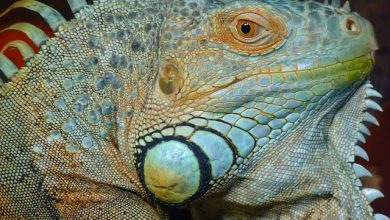Should You Keep Your Exotic Pet Outside? – The Tye-Dyed Iguana

Many pet owners consider the question of whether to keep their animal inside or outside. And in the case of exotic species, the answer is almost always inside — where you can control the environment.
But in some cases, it may not only be safe but even beneficial to keep an animal outside. Which species can you keep in an outdoor habitat, and how do you know if the outdoor habitat will be healthy for them?
Letâs take a look at the factors to consider before setting up outdoor housing for your exotic petâ¦
Determine if the animal would do well outside
The first factor to consider is the species of reptile or amphibian you are considering housing outdoors. For safetyâs sake, we recommend against housing small creatures outside.
Sure, they live outdoors in the wild, but thatâs not exactly conducive to keeping them as pets — a situation where you prefer that they…do not get eaten.
Larger, hardier species are the best bet for outdoor habitats. That may include:
Of course, all of these animals will require different habitats. And whether you can keep your particular tortoise, turtle, or lizard outside will depend a lot on your local climate.
Check the climate
The key to determining if your pet will be comfortable in an outdoor habitat is knowing what itâs native climate is like. For green iguanas that means a warm, humid environment.
Just because you live in a temperate climate does not necessarily exclude you from having an outdoor reptile habitat. But it may mean that you need an alternate habitat for your exotic pet to go inside during unfriendly weather.
Green iguanas, for instance, would do well in an area that has warm, humid summers. But theyâll need to be brought inside for cooler seasons.
If you live in an area that is mostly warm and humid year-round, though, you may be able to keep them outdoors all the time, provided that they have a shelter for unusually cool or hot days and access to water.
For many tortoises, you can create an outdoor habitat and allow them to brumate over the winter. You may still need to bring your brumating animals indoors though.
Consider safety precautions
Another thing to consider is whether you are able to protect your pet from predators in an outdoor habitat. Youâll need to know what wild animals are common in your area and which ones may be a threat.
Protections may include barriers or covers that either keep your animals in or predators out. Safety will also include getting the habitat right. Does your pet need a dry area or a pond? Does it need access to sunlight or shade? And are there any dangerous plants or objects in the area your pet can access?
The bottom line is that choosing to house a reptile or amphibian outdoors should be a decision based on whatâs best for the animal, not just what you would prefer.



